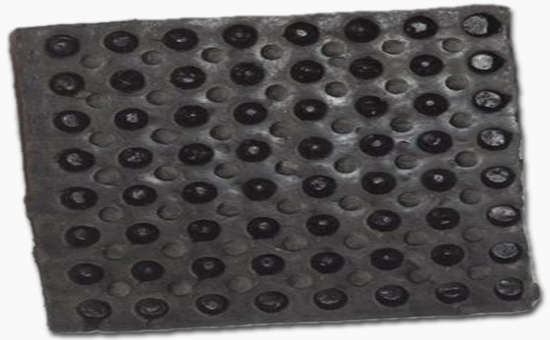
Butyl rubber is a high molecular polymer synthesized from isobutylene and a small amount of isoprene. Its damping properties at high deformation rates are inherent to the polyisobutylene segment and are basically free from factors such as temperature, unsaturation, vulcanization, formulation, etc. It is an ideal raw material for the preparation of air conditioning damping blocks. In actual production, air-conditioning damping block manufacturers can further reduce the raw material cost of butyl damping blocks by using low-priced rubber raw materials under the premise of ensuring product quality, and improve product market competitiveness.
1. Use low-cost rubber raw materials
Using low-cost rubber raw materials to replace butyl rubber is an ideal way to produce low-cost butyl air conditioning damping blocks. In actual production2YLYY316, butyl reclaimed rubber and butyl rubber scraps can replace butyl rubber to produce air conditioning damping blocks; butyl reclaimed rubber can be used alone or in combination with butyl virgin rubber, or it can be combined with butyl reclaimed rubber. Base rubber scraps are used together to effectively reduce the cost of raw materials.
(1) Butyl reclaimed rubber
Butyl reclaimed rubber retains the basic characteristics of butyl rubber, has excellent air tightness, damping and vibration reduction performance, heat resistance, acid and alkali resistance, ozone resistance, weather resistance, polar solvent resistance, low water absorption, and good electrical properties. Compared with butyl reclaimed rubber, butyl reclaimed rubber has low price, good fluidity, high plasticity, and fast vulcanization speed. It can be used with butyl rubber to prepare air conditioning damping blocks. The ratio is based on the physical properties of butyl reclaimed rubber and the size of the damping block. The specific performance requirements are determined, which effectively reduces the cost of raw materials and saves production energy consumption.
(2) Leftovers of butyl rubber
In the production process of butyl rubber, a certain number of products that do not meet the technical requirements will be produced, or some butyl rubber scraps will be obtained when some additives (such as defoamers, neutralizers, etc.) are removed. Butyl rubber scraps have the basic performance characteristics of butyl rubber. Compared with butyl raw rubber, the price is low, Mooney viscosity is low, and the degree of unsaturation varies widely. Direct use in the preparation of butyl air conditioning damping blocks can significantly reduce raw material costs.
2. Adjust the air conditioning damping block formula
When using butyl reclaimed rubber or butyl rubber scraps to prepare low-cost air conditioning damping blocks, rubber product manufacturers can further optimize the overall performance of the butyl damping block by adjusting the variety and amount of compounding agents in the formula, and use it under the premise of ensuring the performance of the finished product. More low-priced raw materials. When preparing damping blocks with butyl reclaimed rubber and a small amount of butyl rubber as the main raw materials, talcum powder and clay are used for filling, naphthenic oil, C5 resin for softening, etc., to improve rubber performance and reduce costs.
In actual production, it is more common to use butyl reclaimed rubber and butyl rubber to prepare low-cost air conditioning damping blocks. Later editors will continue to share with you the formula design points and production process characteristics of butyl air conditioning damping blocks.
Exclusive original article [commercial authorization] reprint, excerpt and excerpt in any form are prohibited without written authorization. Focus on Hongyun rubber: learn the process formula and raw material technology of producing rubber products from recycled rubber to help you reduce costs and increase profits